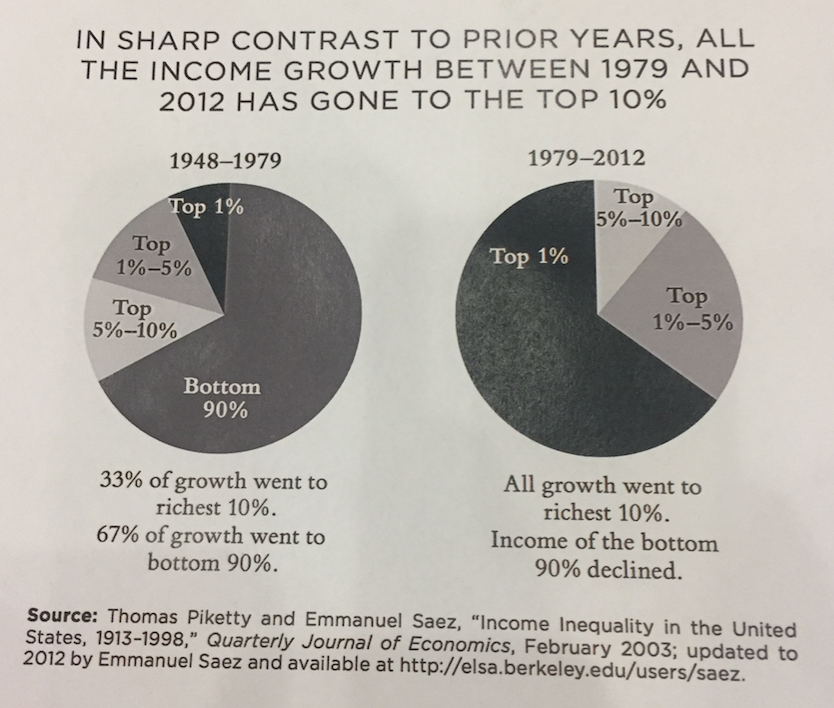On Friday April 7, 2017 I was fortunate enough to be able to attend one of the panels during the Democracy and Citizenship in Our Time teach-in that took place on campus. Topics that were discussed during Panel II included LGBTQIA+, education, economic inequality, immigration, and disabilities. I was particularly intrigued with what Dr. Kathleen Mapes had to say surrounding economic inequality in America and how this problem has been brewing for decades. After our recent viewing of the 1948 film, “Mr. Blandings Builds His Dream House”, I felt this topic to be especially relevant to the themes that we have been discussing thus far in this class this semester and I wanted to explore how economic inequality is presented in the film and the effects that it has on the audience’s interpretations of what it means to build your dream home.
Dr. Mapes started her discussion on economic inequality by distributing a hand-out with some very informative graphics contrasting the income growth in America from 1948-1979 and from 1979-2012. From 1948-1979 just 33% of the income growth went to the richest 10%, whereas from 1979-2012 100% of the growth went to the richest 10%.
This statistic is quite shocking and really prompted me to think about Mr. Blandings’ financial status and where their family would have landed in an informational graphic depicting the income of families during 1948. The film tells us that Mr. Blandings makes $15,000 a year as an advertising executive and “An old review of the film written in 1948 said, ‘It’s hard to feel sorry for a man trying to make ends meet on $15,000 a year when most people earn considerably less.'” This sentiment was most likely reciprocated by others who would have seen the film and wondered why such a well-to-do family was struggling to build their house, especially considering the median income for families in 1948 was $3,120. Economic inequality is definitely brushed right over in this film because the Blandings family is portrayed in a way that makes them look just like every other struggling middle class family trying to build their dream house, when in reality the Blandings family was incredibly well-to-do. Mr. Blandings $15,000/year salary is equivalent to someone making $151,620.12/year today in 2017. I think that it is important for the audience of this film to be aware of these facts because it definitely changed my perception of the Blandings family and how their struggles were able to be viewed in a comedic way only because of their very respectable financial standing.

